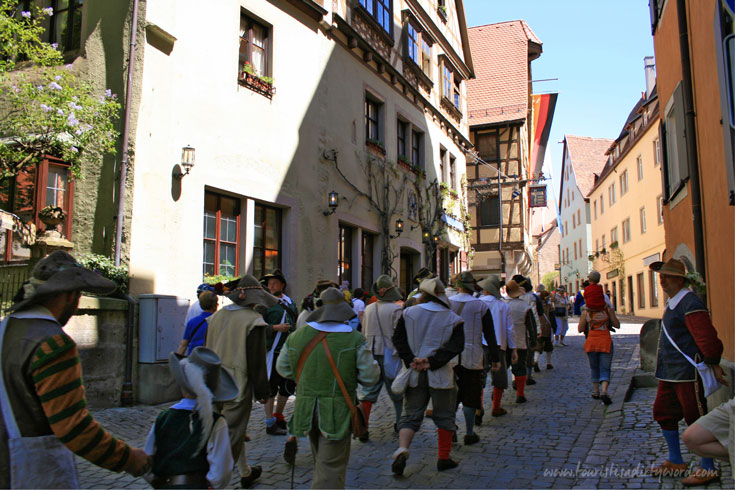Disclosure: Please note that some links are affiliate links, and at no additional cost to you, we earn a commission if you make a purchase.
If you would like to support this website in some way, using these links will help do exactly that.
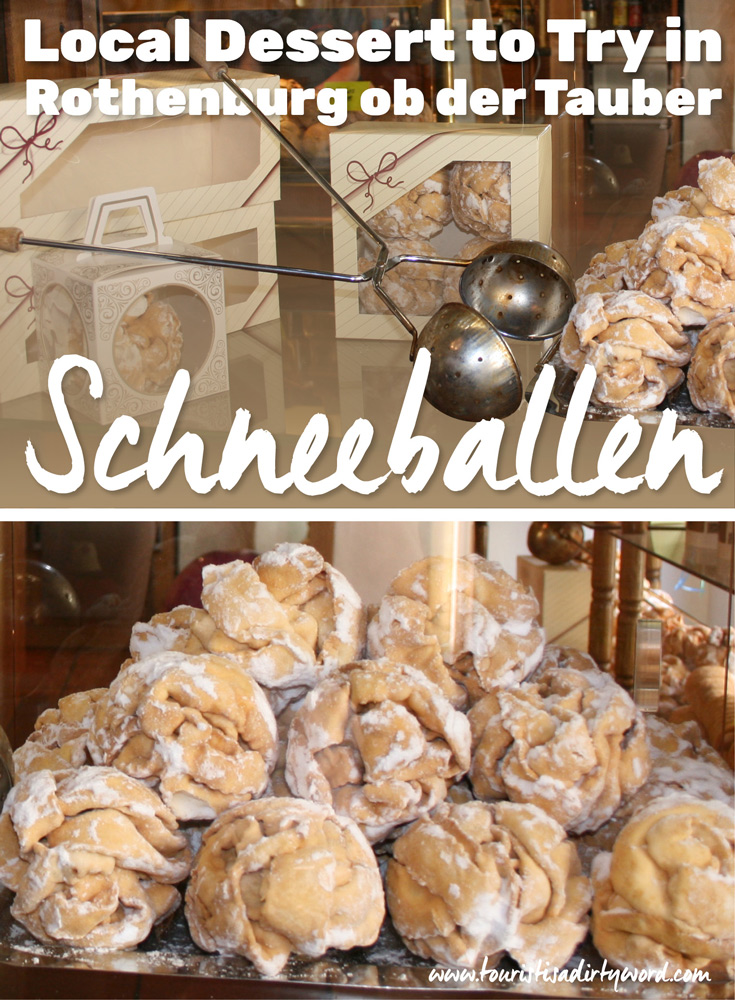
No trip to Rothenburg ob der Tauber is complete without a Schneeballen. This dessert is slightly bigger than a baseball and traditionally covered with confectioner's sugar. If you put enough sugar on, it looks like a snowball - hence the name Schneeballen. Tastes much better than a snowball though.. The Schneeballen have been tempting die-hard sugar fans for over 300 years in several parts of Bavaria. The origin story of the Schneeballen is unknown, but we do know they were originally baked for special occasions only, such as weddings or baptisms. Today you can buy Schneeballen all year round, many of them pre-packaged in gift boxes in Rothenburg, ready for you to share them with your loved ones. While Schneeballen are best eaten fresh, we were told that they have a shelf-life of about 8 weeks at room temperature.
How to Make a Schneeballen
The Schneeballen gets its wavy-ball-like shape from strips of shortcrust pastry that is alternately folded over a stick. Next, a quick 4-minute dunk in the fryer, then cover with a topping of your choice, not limited to confectioner's sugar. We spotted them dusted in cinnamon, chocolate or coconut flakes, and even filled with lemon or hazelnut cream at different stores all over Rothenburg. For those of you who would like to create a Schneeballen at home, here is a recipe, courtesy of Bavaria Tourismus.
Follow Along
If you enjoyed this article, or these topics sound interesting to you, you'll love our weekly newsletter. You'll receive a free Germany Packing list for signing up, and you'll receive each week's newest posts every Friday. Thank you for reading!

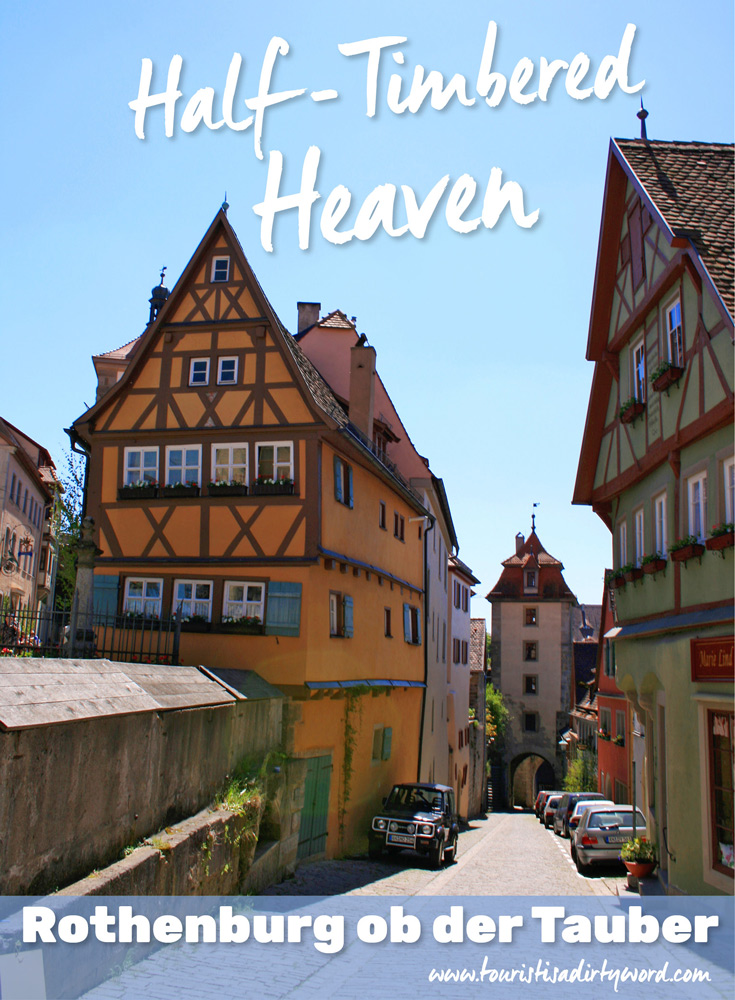
Regardless of where you’re at in Rothenburg, it's hard to take a bad photo. It's a half-timbered, cobblestone-laden wonderland that magically transforms the weakest of cameras into a postcard-making-machine. One spot in particular, will make your camera weak in the knees. That spot has a name, Plönlein, which derives from latin ‘planum’, meaning ‘flat square’ and refers to a place in Rothenburg where two streets join together from two different elevations. It is possible to stand at the fork in the road and see two towers, the Siebers is the higher one, and the Kobolzeller is the lower one, and an adorable home nestled in between. Both towers AND the home were built with the first town expansion in 1204. Believe it or not, that home is still privately owned. Another example of why I love Germany.
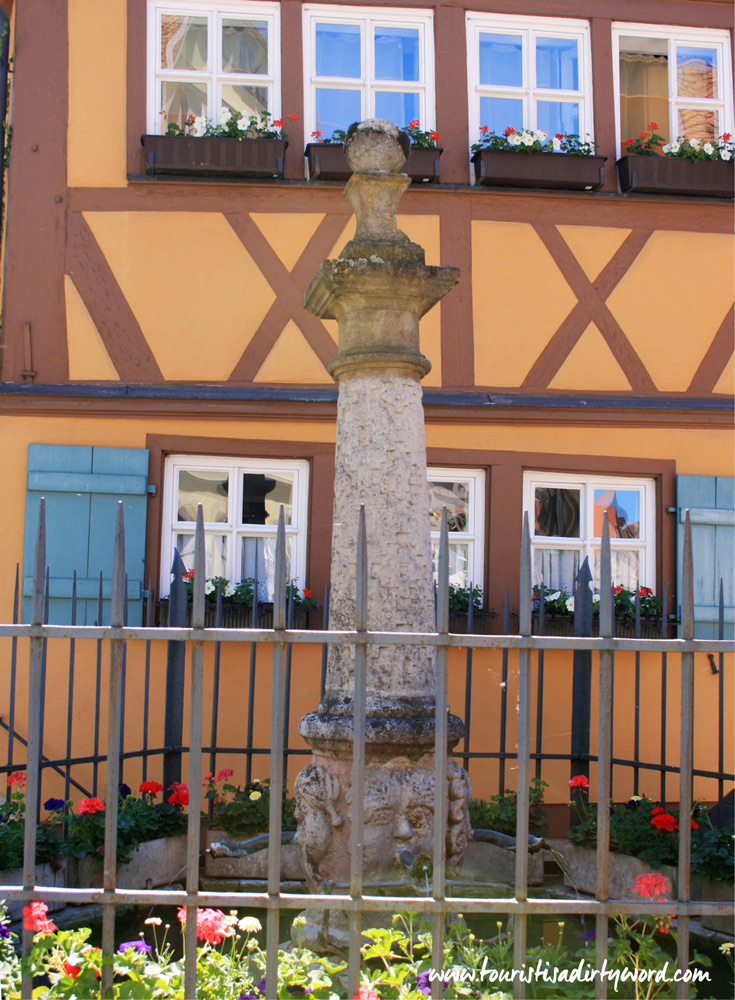
Half-Timbered | Who | What | Where | When | Why
When I see homes and buildings built in the half-timber, Fachwerk in German, style, I usually mentally associate the homes as medieval and (thanks to Disney) as either French or German. In truth, half-timbered housing, has been used in various places all over the world for thousands of years, including Ancient Japan, China, Europe and North America for the simple reason that these regions had an ample supply of lumber vs stone to build with.
The English term 'half-timbered' was first mentioned by author Mary Martha Sherwood in her book The Lady of the Manor, published in volumes between 1823-1829. In 1842, half-timbered was included for the first time in the Encyclopedia of Architecture by Joseph Gwilt. The 'half' portion in 'half-timbered refers to how the wood was split in half, with the smooth surface on the exterior and the rough edge on the inside of the home. Once the building was framed out in wood, the space between was filled with malleable, sculptural material such as plaster, brick, wattle and daub.
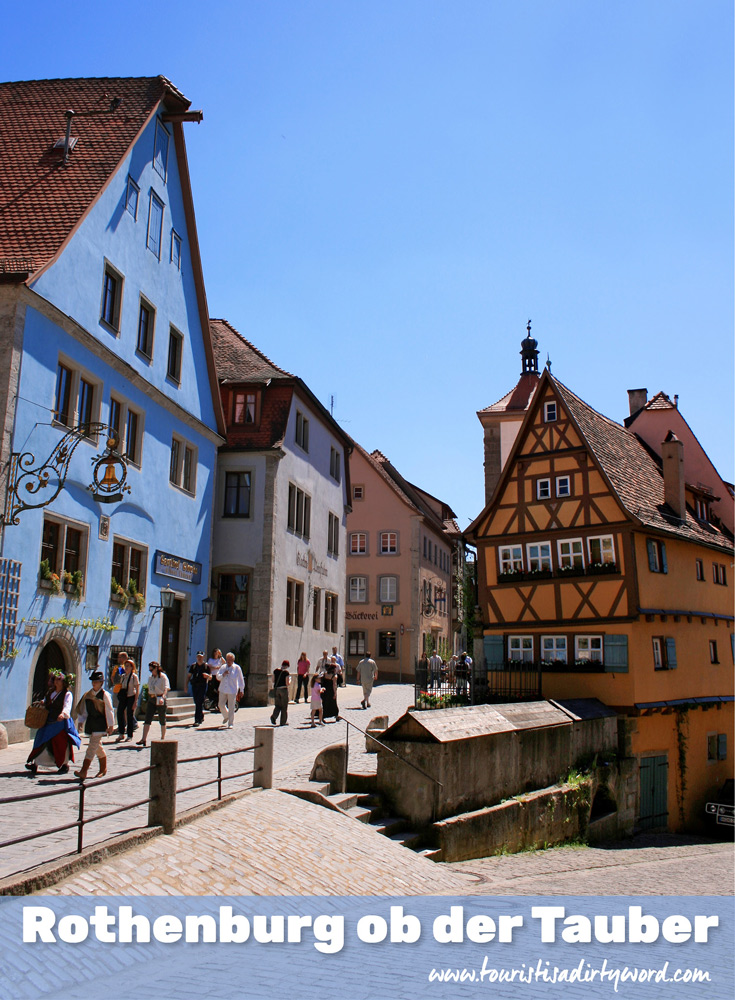
Follow Along
If you enjoyed this article, or these topics sound interesting to you, you'll love our weekly newsletter. You'll receive a free Germany Packing list for signing up, and you'll receive each week's newest posts every Friday. Thank you for reading!

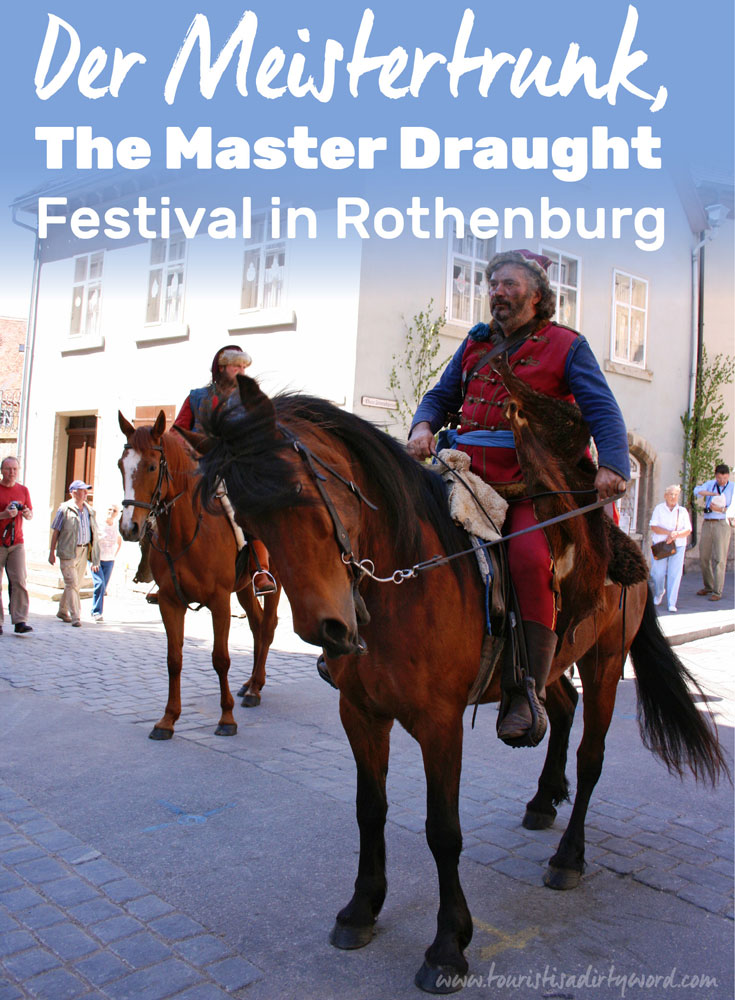
I was surprised to see so many people wearing 17th century clothes, when we arrived in Rothenburg ob der Tauber. For all I knew this could be a tradition here, given the historical status of this city and seeing lederhosen and dirndls as common place in Munich, but not even close. We had walked right into a medieval festival named Der Meistertrunk, which translates to The Master Draught.
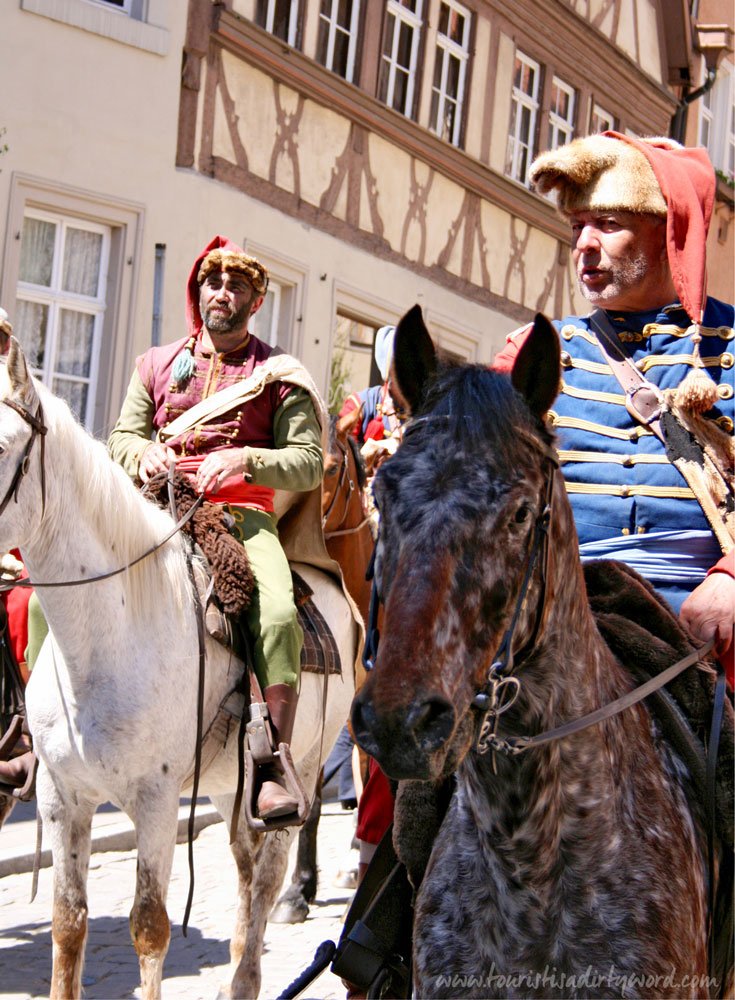
When History and Legend Meet
This festival transports you back to the year 1631, smack in the middle of the Thirty Years' War, the longest conflict Europe has seen to this day. Count Tilly and his Catholic army have taken over the town of Rothenburg after three full days of fighting. Even after the siege, Count Tilly is still met with resistance from the Protestant citizens of Rothenburg. This outrage forced the hand of the Count and he ordered his 60,000 men army to destroy the city and also execute the mayor and all city councilors.
The city councilors are shocked and offer the Count more of the Franconian wine which had been grown outside of the city of Rothenburg. The wine comes in a large tankard holding 13 Franconian pints. In today's measurements that would be 3.25 liters or 0.86 gallons of wine. The view of this substantial amount of wine made Count Tilly joke, that he would spare the town, if one of the city council members could swallow the entire amount in one go. Georg Nusch, one of the council members stepped forward, and chugged the entire wine
Der Meistertrunk, The Master Draught Festival Today
Based on this legendary story, local poet Adam Hörber wrote Der Meistertrunk play, which premiered in 1881 and is still performed every year during the Pentecost holiday weekend in May. There were many events going on around the play in the city center including a military parade, many market stands with historical souvenirs and sword throwers practicing on a large lawn.
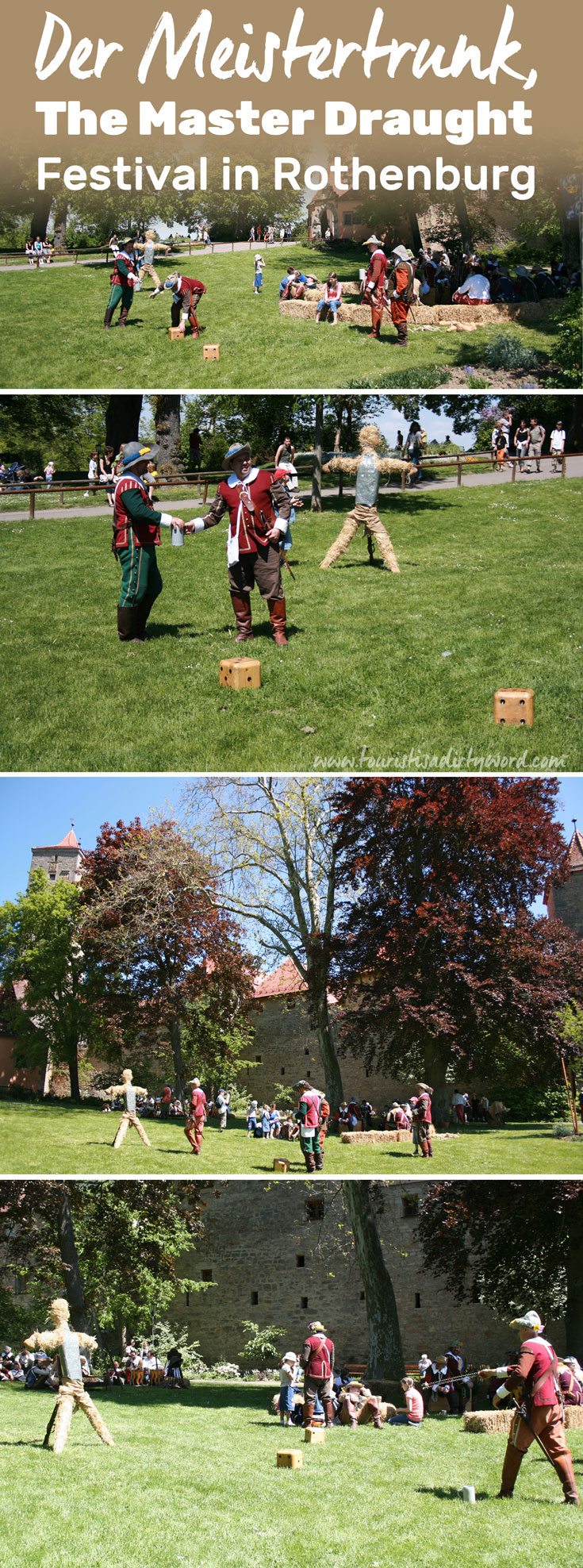
If you cannot make it to the festival in May, take a stroll to the City Councillors' Tavern, which was only accessible by town council members back in the day and acts as the Tourism office for Rothenburg ob der Tauber today. The windows next to the clock on the building open every hour on the hour between 10am & 10pm. In the left window you will see Count Tilly looking over to the right window in awe of Georg Nusch drinking all the wine in one go. Catch a video of it here, even though it is a bit shaky
The Real Deal?
If you would like to see the alleged tankard, head over to the Reichsstadtmuseum in Rothenburg and look for the Kurfürstenhumpen, dated 1616. In this museum you will also find much more about the medieval history of Rothenburg including paintings, sculptures, and even weapons used to fight Count Tilly.
Bonus Resource
Watch German TV Documentary about the festival.
Follow Along
If you enjoyed this article, or these topics sound interesting to you, you'll love our weekly newsletter. You'll receive a free Germany Packing list for signing up, and you'll receive each week's newest posts every Friday. Thank you for reading!

